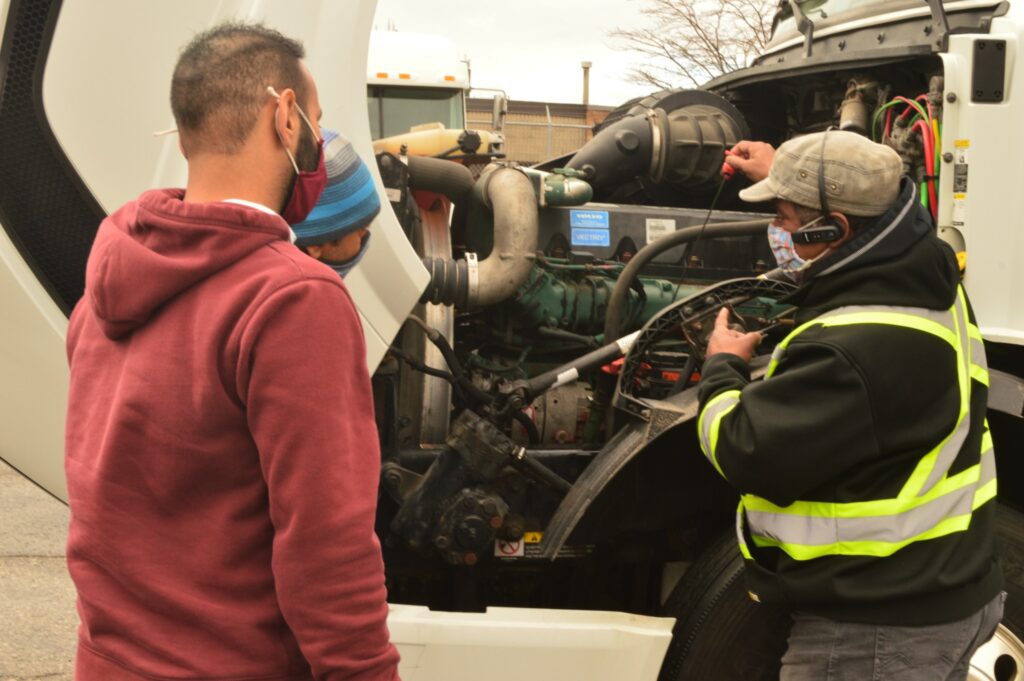
Over the last 10 years, 12 roadside workers died and 207 were injured
The BC Cone Zone campaign, now in its 11th year, sets out to remind drivers, employers, and workers to do their part to prevent injuries and deaths of roadside workers.
Roadside work is a dangerous job. Between 2011 and 2020, 12 roadside workers were killed and 207 were injured in B.C. Last year, 23 workers were injured because of being hit by a motor vehicle.
The risks to roadside workers are more prevalent in the summer months as roadside work increases at this time of year and traffic levels typically rise.
The campaign reminds drivers to slow down when approaching a Cone Zone and to pay attention to instructions from traffic control persons, temporary road signs, and traffic control devices.
In addition, under the “Slow Down, Move Over” law, drivers should be prepared to reduce speed and if safe to do so, move over to an open lane when approaching a vehicle with flashing amber, red, or blue lights (tow, fire, police, ambulance).
As part of the campaign, a traffic enforcement blitz will occur at roadside work zones where police will be ticketing drivers for unsafe behaviours. Tickets will be issued for violations, such as speeding, disobeying a flag person, or using an electronic device while driving.
Cone Zones are work areas set up by roadside workers to protect themselves and the driving public. Road-maintenance crews, tow truck operators, first responders, municipal workers, traffic control persons, construction crews, and other roadside workers all depend on drivers to respect the Cone Zone to keep their workplaces safe.
Employers have a legal responsibility to ensure the health and safety of their workers and contractors along BC’s roads and highways, including:
• Ensuring their workers understand the hazards related to working at the roadside.
• Providing their workers with training, equipment, supervision and resources to help keep them safe.
Roadside workers can work safely by:
• Knowing how to identify hazards and assess risks.
• Following safe work procedures, including work zone set-up and take-down.
• Wearing appropriate high-visibility clothing and other PPE.
• Reporting unsafe work conditions to their supervisor.
Major provincial projects scheduled and underway during the 2021 summer include:
• Highway 1 Lower Lynn Improvements
• Highway 91/17 Upgrade Project
Quotes:
Harry Bains, Minister of Labour:
“It’s important that workers are safe on the job, and in fact it’s their lawful right. In addition to the hazards of roadwork, flaggers and other people who work in Cone Zones face additional risks from passing vehicles. I ask all drivers to do their part and slow down so these workers remain safe and return home healthy at the end of their shifts.”
Rob Fleming, Minister of Transportation and Infrastructure:
“It’s a busy time for road maintenance and we’re reminding drivers to slow down and drive with care. Using caution while passing through a job site will help keep our traffic controllers and construction workers safe while they do their job. Campaigns like this are great reminders to respect the Cone Zone, for everyone’s safety.”
Louise Yako, Program Director Road Safety At Work:
“One of the greatest risks to a roadside worker is a motor vehicle being driven through their workplace. Dangerous driving behaviour like speeding and distracted driving puts these workers at risk of injury and death.”
“The Cone Zone campaign is a joint provincial initiative supported by the Work Zone Safety Alliance of organizations committed to improving the safety of roadside workers. Until the number of fatalities and injuries is zero, we will continue to take action to protect roadside workers. We ask all drivers, and roadside employers and workers to do the same.”
Al Johnson, Head of Prevention Services at WorkSafeBC:
“Roadside work is a dangerous job—and spring and summer are the busiest times of the year for these workers. Drivers must remember to reduce their speed, pay attention, and be respectful of the roadside workers and their workplace, so these women and men can go home safely to their families at the end of the day.”
Resources and Statistics:
Employers and workers can also access online tools, campaign resources, and materials at www.ConeZoneBC.com and www.worksafebc.com/conezone.
For additional statistics, access this infographic on Tableau.
About the Cone Zone Campaign
The Cone Zone campaign, supported by the Work Zone Safety Alliance, aims to reduce the number of deaths and injuries to roadside workers by increasing awareness of the vulnerability of these workers and encouraging drivers to practise safe driving behaviour in the Cone Zone.
About the Work Zone Safety Alliance
The Cone Zone campaign is a joint provincial initiative supported by organizations committed to improving the safety of roadside workers. They are Ambulance Paramedics of B.C., Automotive Retailers Association, BCAA, BC Construction Safety Alliance, BC Flagging Association, BC Landscape and Nursery Association, BC Municipal Safety Association, BC Road Builders and Heavy Construction Association, BC Road Safe, CoreCode Safety and Compliance, Government of BC, IBEW Local 258, Insurance Corporation of BC, K&K Consulting, Justice Institute of British Columbia, LiUNA Local 1611, Mainroad Group, RCMP, Road Safety at Work, SafetyDriven, Telus, The Universal Group, and WorkSafeBC.
About Road Safety At Work
Road Safety At Work is a WorkSafeBC-funded initiative managed by the Justice Institute of BC aimed at eliminating work-related motor vehicle crashes, deaths, and injuries in British Columbia. Road Safety At Work offers free online resources and courses — as well as workshops, webinars, and consulting services — to help organizations plan, implement and monitor effective road safety programs.
Media contact:
Anita Deiter, Cone Zone Campaign Manager
Tel: 604-786-9566
anita.deiter@roadsafetyatwork.ca



